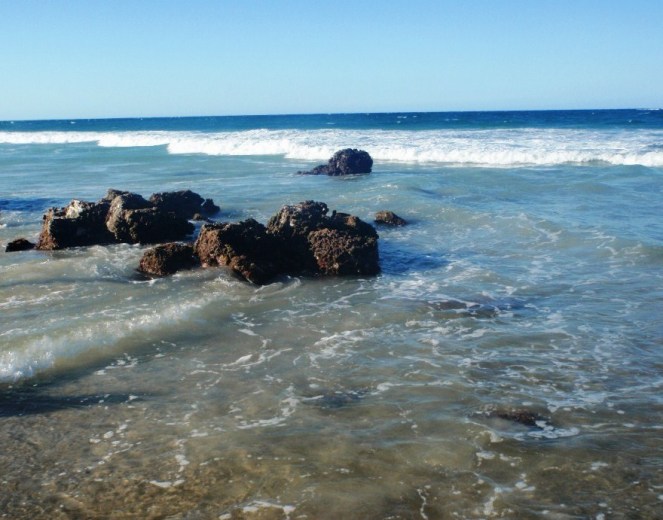 In May 1770, when Captain James Cook sailed along the eastern coast of Australia, he originally named what is today known as Fingal Head, Point Danger. Today, Point Danger is located just five kilometres north of Fingal Head. Since the mistake of locations was made so many years ago, the two place names have become established in the area, and are not about to be changed, even to keep Captain Cook happy!
In May 1770, when Captain James Cook sailed along the eastern coast of Australia, he originally named what is today known as Fingal Head, Point Danger. Today, Point Danger is located just five kilometres north of Fingal Head. Since the mistake of locations was made so many years ago, the two place names have become established in the area, and are not about to be changed, even to keep Captain Cook happy!

Regardless, both Point Danger and Fingal Head are points of immense natural beauty in the area and both also share the need for a lighthouse, due to the dangerous offshore reefs.

When my husband and I spent a leisurely Sunday afternoon at Fingal Beach recently, the dangerous reefs and pounding waves were the least of our concerns. We took a long walk along the sandy beach, dodging the volcanic rocks, as my ex-surfer and fourth generation Tweed Valley husband educated me on the history of the beach, pre-Cook days.

About twenty-million years ago Mount Warning, (you will remember Mount Warning, surely, from the umpteen times I have made mention here of this Magical Mountain) a now-extinct volcano, spat out basalt lava, now hardened into rocks, which to this day adorn the shores of Fingal Beach.
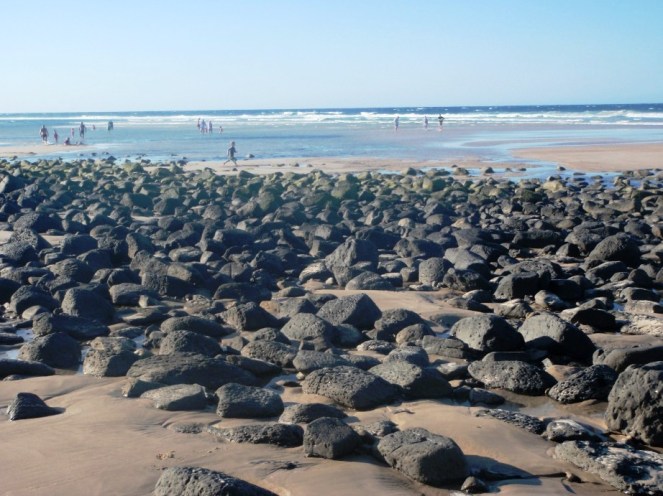
Surely these rocks haven’t remained here, on this same beach, for twenty-million years, untouched, I wondered? Apparently, yes, they have. The basalt lava from Mount Warning solidified and over the years has transformed into the rock formations we see today on the beach.
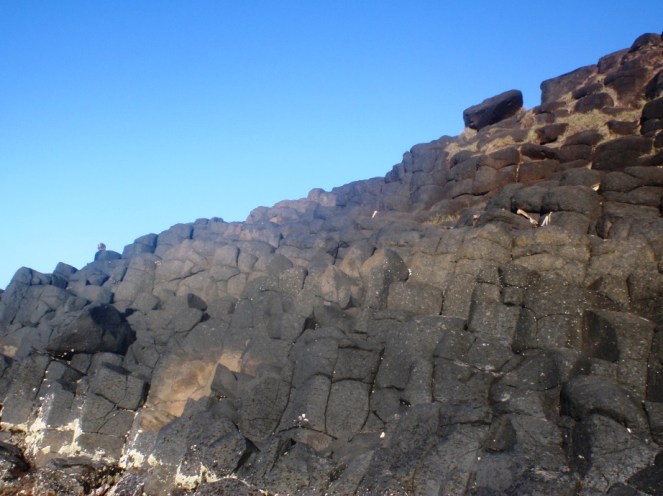
As the lava cooled and contracted, in places it split into unusual columns of rocks, which resemble rock formations in Fingal, Ireland, hence Fingal Head was given its name.

We climbed over a narrow section of the rocks to reach a grassy, tree-lined track, which would take us up to the Fingal Lighthouse.

After quite a considerable amount of time spent photographing and admiring Fingal Head Lighthouse, we ventured along the boardwalk tracks, not knowing for sure where they would lead to.

After surviving over twenty-million years subjected to the elements, it is good to know that the area is being taken care of, in an effort to retain the natural beauty of Fingal.
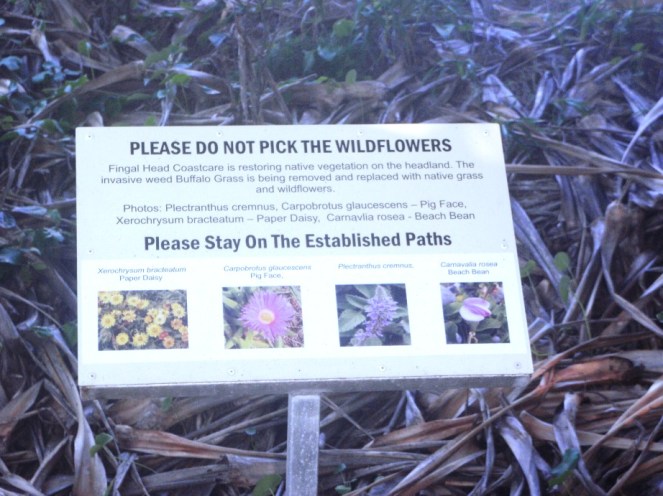
There were a number of off-shoots along the path but we chose the path which would lead us back to the beach.

I’m not sure of the name of the trees around the beach, but look at the unusual roots in this next photo. I thought at first that the soil, or sand, had eroded from around the base of the trees, leaving the roots exposed, but my husband assures me that is the way these trees grow.
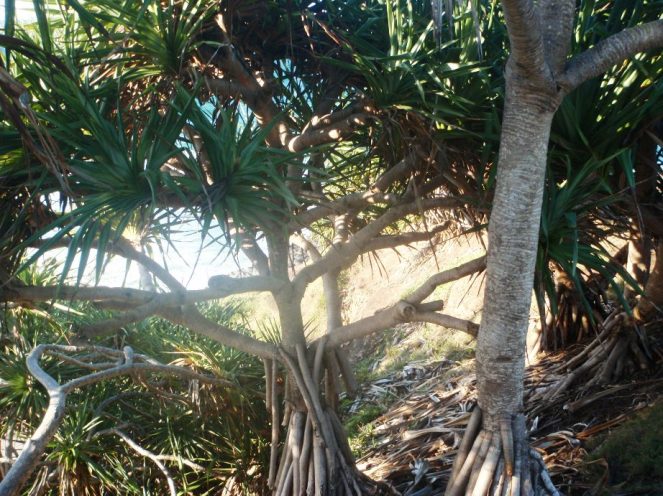
As we headed back towards our car, I glanced back for one last look at the volcanic rocks along the beach, and noticed how long the shadows were getting as night-time approached.

It really was a picture perfect day, with the brilliant blue skies are gentle breeze. Even as the sky darkened, everywhere I looked I found more and more beautiful images to photograph, as we bid our goodbyes to Fingal Beach.


Oh what a beautiful shoreline! The rocks and rock formations the lava left on Fingal Beach are very impressive. The trees with the above ground roots are fascinating. And I love walking on boardwalks through natural areas – what a wonderful day you had! Now I think I might understand how Mount Warning got its name. Thanks for sharing these lovely photos, Joanne!
LikeLike
Fingal Beach is very impressive Barbara. It’s quite isolated compared to some of the other beaches in our area and the lighthouse adds its own special touch too, of course! 🙂
LikeLike
How lovely! Such great photos, I felt as though I was walking with you. Thank you.
LikeLike
That’s great to hear, Carol! I re-walked the afternoon through my mind as I wrote, so it’s so good to know that you felt that way. 🙂
LikeLike
Love your post, the pictures are wornderful. Really brings me back to the early 90’s when I was in Australia for 6 months. Didn’t get to Fingal head but did climb Mt Warning and Ayeres Rock. There’s nothing quite like the great southern ocean. Thank you so much for sharing the beauty here.
LikeLike
Thank you Alison. 🙂
Now that’s somewhere I haven’t been to, Ayers Rock, or Uluru, as it is now known. I hope you took a camera with you as I can imagine the amazing photos you could have taken. And you’ve climbed Mount Warning too! I absolutely love the rainforest up in the mountain, and the little stream that runs between the rocks and trees, just beside the area at the limit you can drive to. Now the weather is cooling down here I must make a point of going up into Mount Warning again myself. 🙂
I hope your six month visit to Australia left you with some wonderful memories. 🙂
LikeLike
Hi Jo,
I love your stories about the Tweed Coast. Fingal is a very special place.Your first comment in this story hit me. YES Fingal Head IS Point Danger.For more history on the Fingal Head/Point Danger Story see the following.
Go To National library of Australia. Go To the TROVE – digital database of newspapers and more…
Look for “The Australian Women’s Weekly – Wednesday 5th January 1972 – Pages 32 and 33. It’s a story about old Mr Grant and his battle to prove that Fingal Head was indeed Point Danger. There is much more information in the achives of the Tweed Daily News. He was right but the geographical place names committee refused to change the name or location.Co-incidentally I just read your latest ANZAC Day Story – Mr Grant was a World War 1 Digger who was awarded the Military Medal for his actions in Belgium in 1915.
LikeLike
Thank you Chris. I’m pleased to hear you are enjoying my stories. It’s such a beautiful area and when I search the internet the stories are so impersonal, so I’m trying to show my local area from my own personal point of view.
Thank you for heading me in the direction of the old Australian Women’s Weekly article. I’ve added the link here ~ http://tinyurl.com/7wfvnus I hadn’t heard of this website before, so will keep it in my bookmarked sites.
I’ll have to see what I can find in the Daily News archives for future stories I will be writing. Thank you for the tip! If I can’t find what I’m looking for, I’ll give my cousin, who works at the Daily News, a call. She may be able to help out! I’m guessing you must be a local person to the Tweed, you seem to know a lot about the area. Thank you for dropping by and leaving the comment. 🙂
LikeLike
What a beautiful place! I really enjoyed coming along on your walk. Thank you. 🙂
LikeLike
Thank you for joining us, Robin. 🙂
LikeLike